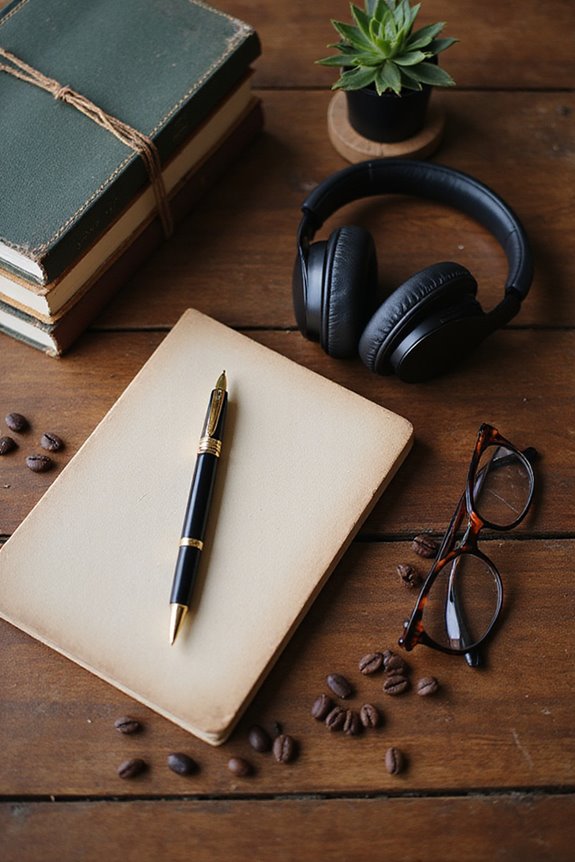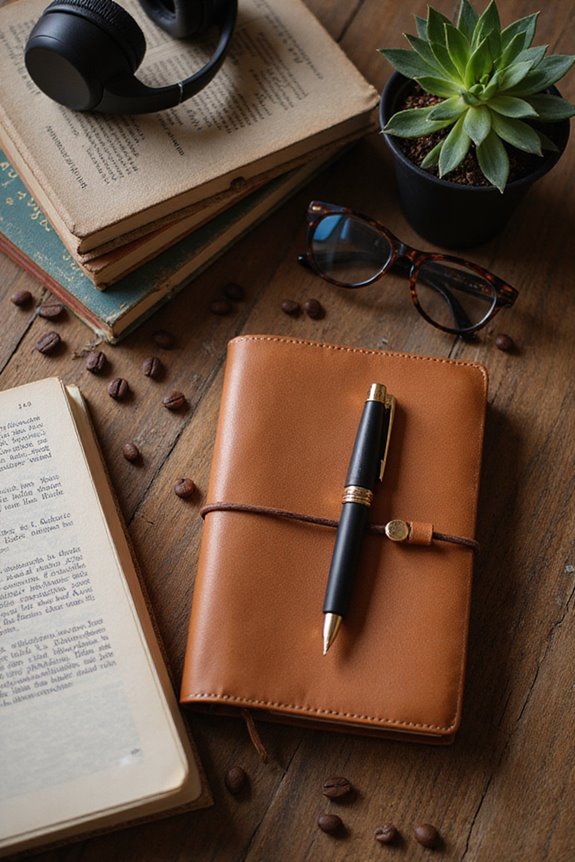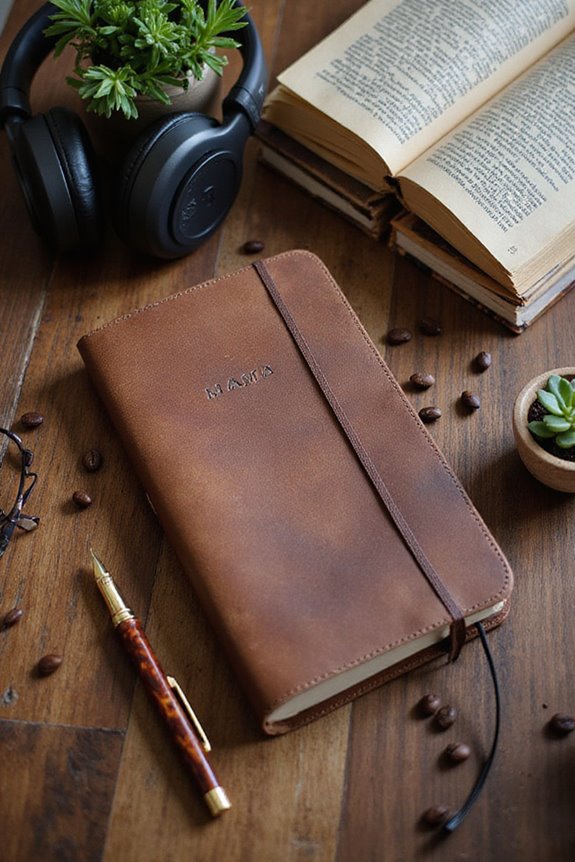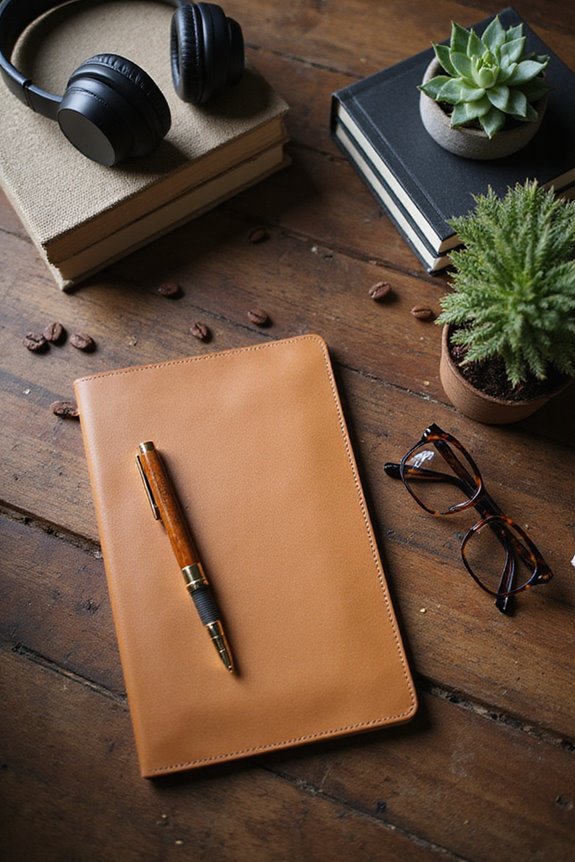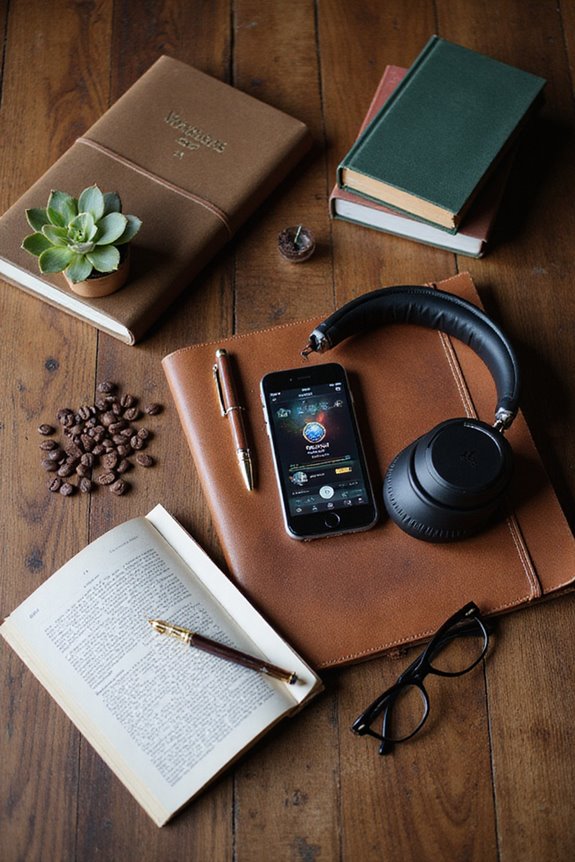To prevent ear fatigue while jamming out to music for hours, we should keep our volume below 60% of the max. Comfort is key, so let’s invest in quality headphones that fit well. Taking breaks every hour helps recharge our ears, and mixing up genres can keep things fresh. Plus, monitoring total listening time is essential to avoid overexposure. We’ve got more tips to help you enjoy your tunes safely and comfortably!
Key Takeaways
- Keep volume levels below 60% of your device’s maximum to reduce the risk of ear fatigue and hearing loss.
- Take regular breaks every hour to allow your ears to rest and recover from prolonged listening sessions.
- Choose comfortable, ergonomic headphones with sound isolation features to enhance your listening experience and prevent discomfort.
- Monitor your total daily listening time, aiming to limit it to avoid overexposure to loud sounds.
- Schedule regular hearing health checks to catch any potential issues early and ensure long-term ear health.
Understanding Ear Fatigue
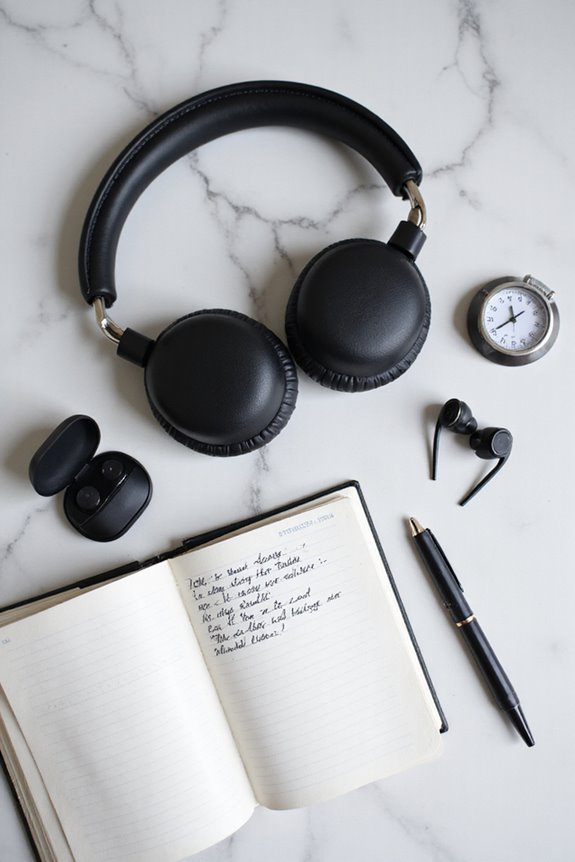
Ear fatigue—while it might sound like something that only happens to musicians or sound engineers—is something we can all experience, especially when we’re tuning into our favorite playlists for hours on end. The main causes of ear fatigue are prolonged listening sessions and overstimulated sensory cells. Symptoms of ear fatigue include tiredness, discomfort in our ears or head, and even temporary loss of hearing sensitivity. It’s essential to listen to our bodies and take breaks when we start feeling that fatigue. If you notice signs like headaches or concentration issues, it’s time to hit pause. We need to protect our hearing by giving our ears a rest, ensuring a better listening experience in the long run.
Importance of Volume Control
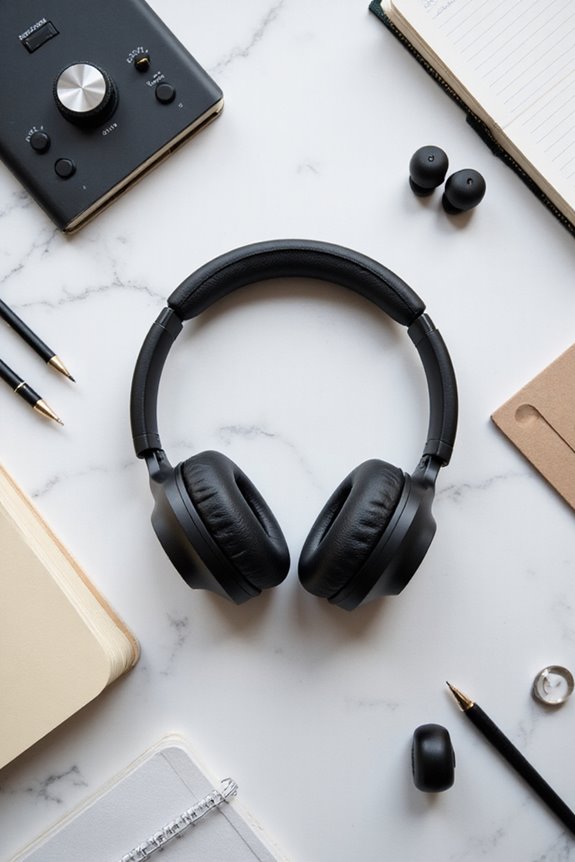
When it comes to enjoying our favorite tunes, volume control is key—think of it as our secret weapon against ear fatigue. By keeping our sound levels within safe thresholds, we protect our hearing and maintain the enjoyment of music. We should aim to keep volume limits below 60% of our device’s maximum. Listening at more than 85 dB can crank up the risk of hearing issues like tinnitus and fatigue, while moderate levels allow for longer listening times without strain. Using noise-cancelling headphones can help us resist the urge to blast the volume in noisy environments. Plus, many devices now come with volume-limiting features. So let’s embrace these smart tools and keep our music journeys both enjoyable and safe!
Choosing the Right Listening Devices
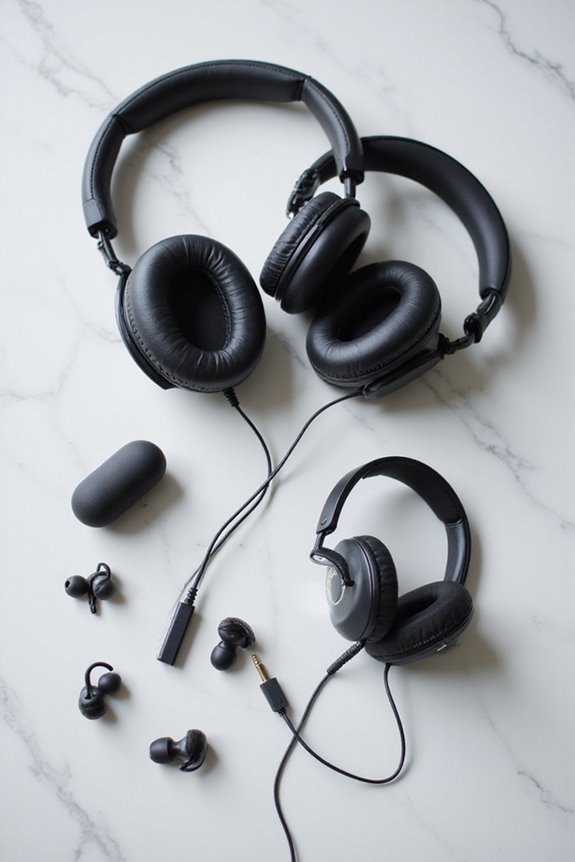
How can we make certain our listening experience doesn’t turn into an uncomfortable slog? Choosing the right listening devices is key! First, let’s talk about headphone comfort. Opt for those with ergonomic designs, as they’ll fit snugly and guarantee we can enjoy our music for hours without discomfort. Next, consider sound isolation—closed-back headphones keep outside noise at bay, while open-back models provide better airflow, reducing sound pressure that can lead to fatigue. Remember, each type has its place: for mixing and mastering, open-backs shine, while closed-backs are great for recording. Investing in quality devices not only enhances sound reproduction but also contributes to a more pleasurable listening experience. So, let’s make careful choices and rock out without the aches!
Managing Listening Sessions Effectively
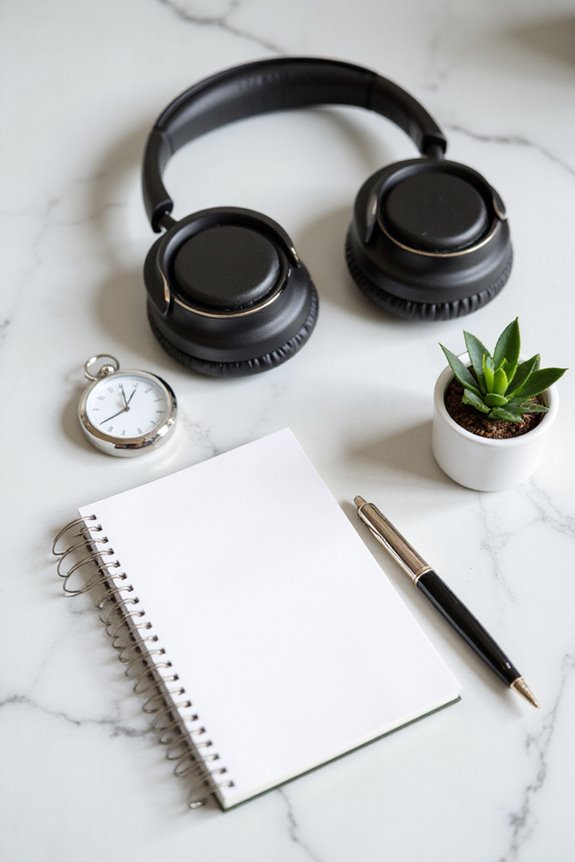
Managing our listening sessions effectively isn’t just about what we listen to; it’s about how we listen. To keep our ears happy, let’s stick to sound intensities below 85 dB. This is essential for preventing fatigue and potential hearing loss. Plus, establishing dedicated listening schedules can help us maintain balance, allowing us to enjoy music without overdoing it. Remember, regular breaks are our friends; stepping away for a few minutes can recharge our auditory systems. Monitoring our total listening time daily is also key—too much loud music can be a recipe for disaster. So, let’s mix it up with various genres and remember that our ears will thank us for the patience we show in our listening habits!
Prioritizing Audio Quality
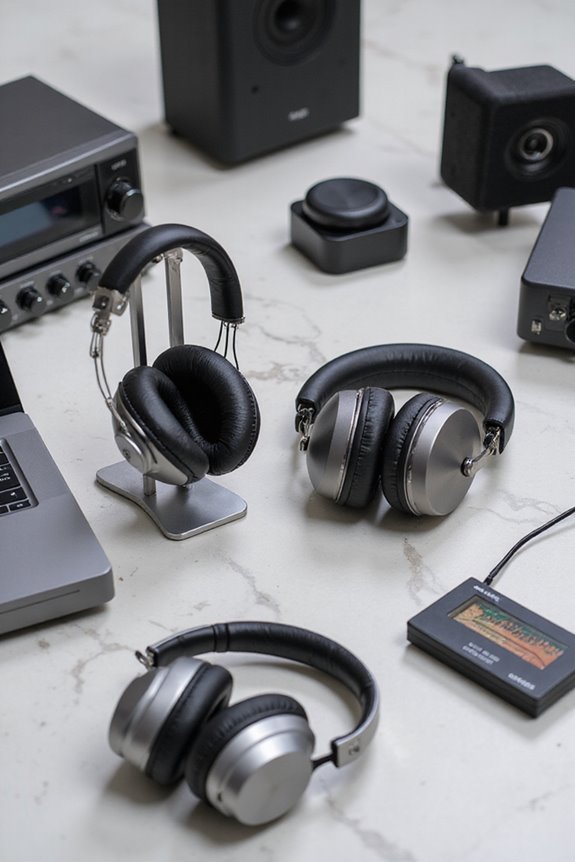
Prioritizing audio quality can make all the difference in how we experience music, so let’s explore some practical tips. First, consider investing in high-quality headphones, like open-back models, which enhance sound clarity and reduce ear pressure. It’s also wise to treat our listening space acoustically; a well-tuned room can greatly improve audio fidelity. Don’t forget about monitoring equipment—good gear guarantees accurate sound reproduction! Additionally, we should keep our volume levels between 75-85 dB SPL to avoid ear fatigue. Using reference tracks can help us maintain consistency in mixes. By taking these steps, we can enjoy hours of music without stressing our ears. Remember, a few small changes can lead to a much richer listening experience!
Adjusting Your Environment
Listening to high-quality music can be a real joy, but we can also enhance our experience by thinking about our environment. To minimize auditory fatigue, let’s start by reducing ambient noise. We could use soundproofing materials or find quieter spaces for our music sessions, like a cozy corner at home. Incorporating noise-canceling technology, like headphones or earplugs, also helps filter out distractions and minimize sensory overload. Additionally, simple acoustic adjustments, such as adding rugs or moving furniture, can enhance our listening environment. Monitoring sound levels guarantees we’re not blasting our tunes too loud, which is essential for auditory comfort. By taking these steps, we can create an enjoyable atmosphere where we can truly immerse ourselves in the music!
Implementing Behavioral Adjustments
While we all love cranking up our favorite tunes, we should really consider some behavioral adjustments to keep our ears feeling revitalized. Monitoring our volume levels around 80-85 dB SPL can make a huge difference. Let’s use a decibel meter app to keep track, ensuring we avoid constant volume changes, which can strain our ears. Taking regular breaks, like setting a timer for 45-minute listening sessions followed by a quick 5-10 minute pause, can also prevent fatigue. Plus, let’s switch up our gear—using open-back headphones or speakers allows for a revitalizing change and keeps our auditory awareness sharp. By recognizing those behavioral triggers that signal fatigue, we can keep our sound experience enjoyable!
Engaging in Regular Hearing Health Checks
Making a habit of regular hearing health checks can be a game-changer for our overall listening experience. By scheduling hearing screenings every few years, especially if we’re under 50 and frequently exposed to loud environments, we can catch any potential issues early. For those of us over 50, getting our hearing tested every three years is essential, too. It’s all about preventive care!
If we notice sudden changes or decreases in our hearing, let’s not hesitate to consult an audiologist. Regular checks help guarantee we’re treating any hearing loss effectively before it gets worse. Plus, we can enjoy our music without worrying if it’s causing any long-term damage. So, let’s keep those ears in check!
Sharing Safe Listening Practices
When we immerse ourselves in our favorite tunes, it’s easy to forget about the toll it can take on our ears. That’s why practicing safe listening is essential! We should aim to keep sound levels below 85 decibels, especially while using headphones, where music can easily reach harmful levels. Let’s also remember to take regular breaks, giving our ears a chance to recover. If we find ourselves at a loud concert, wearing hearing protection like earplugs or earmuffs can make a huge difference. Encouraging our friends to adopt these habits is important, too. Together, we can raise awareness about safe listening and protect our hearing for years to come. Let’s groove wisely and enjoy music without regrets!
Frequently Asked Questions
What Are the Signs of Ear Fatigue to Watch For?
When we’re listening, we should watch for signs of ear discomfort, like tiredness and tinnitus. If volume levels are too high, we risk muffled hearing and reduced alertness, signaling it’s time to take a break.
Can Ear Fatigue Lead to Permanent Hearing Loss?
Yes, ear fatigue can definitely lead to permanent hearing loss if we don’t use hearing protection at high sound levels. It’s essential we protect our ears, or we could face dire consequences down the line!
How Does Hydration Affect Ear Health While Listening?
Hydration plays an essential role in ear health, affecting sound transmission and sensitivity. With hydration tips like sipping water throughout the day, we can help maintain our auditory clarity and overall ear function together.
Are There Specific Genres More Likely to Cause Fatigue?
We’ve all felt the weight of heavy electronic beats or relentless pop music dragging us down. In contrast, classical harmonies and ambient soundscapes can refresh our ears, offering a delicate balance to avoid overwhelming fatigue.
How Often Should I Take Breaks During Long Listening Sessions?
When it comes to break frequency, we should take breaks every hour and aim for a break duration of 10-15 minutes. This helps us recharge and reduces the risk of ear fatigue during lengthy listening sessions.

